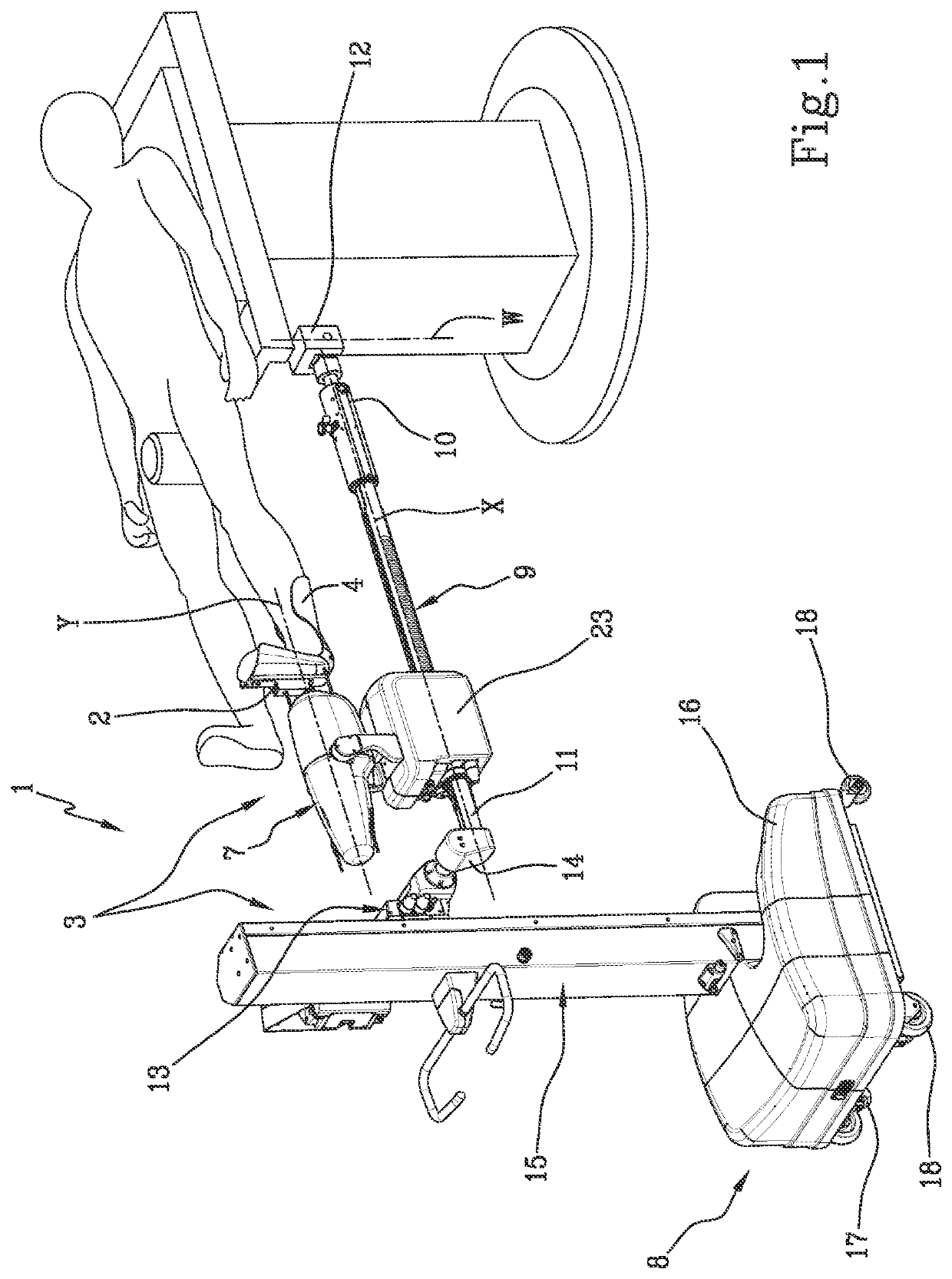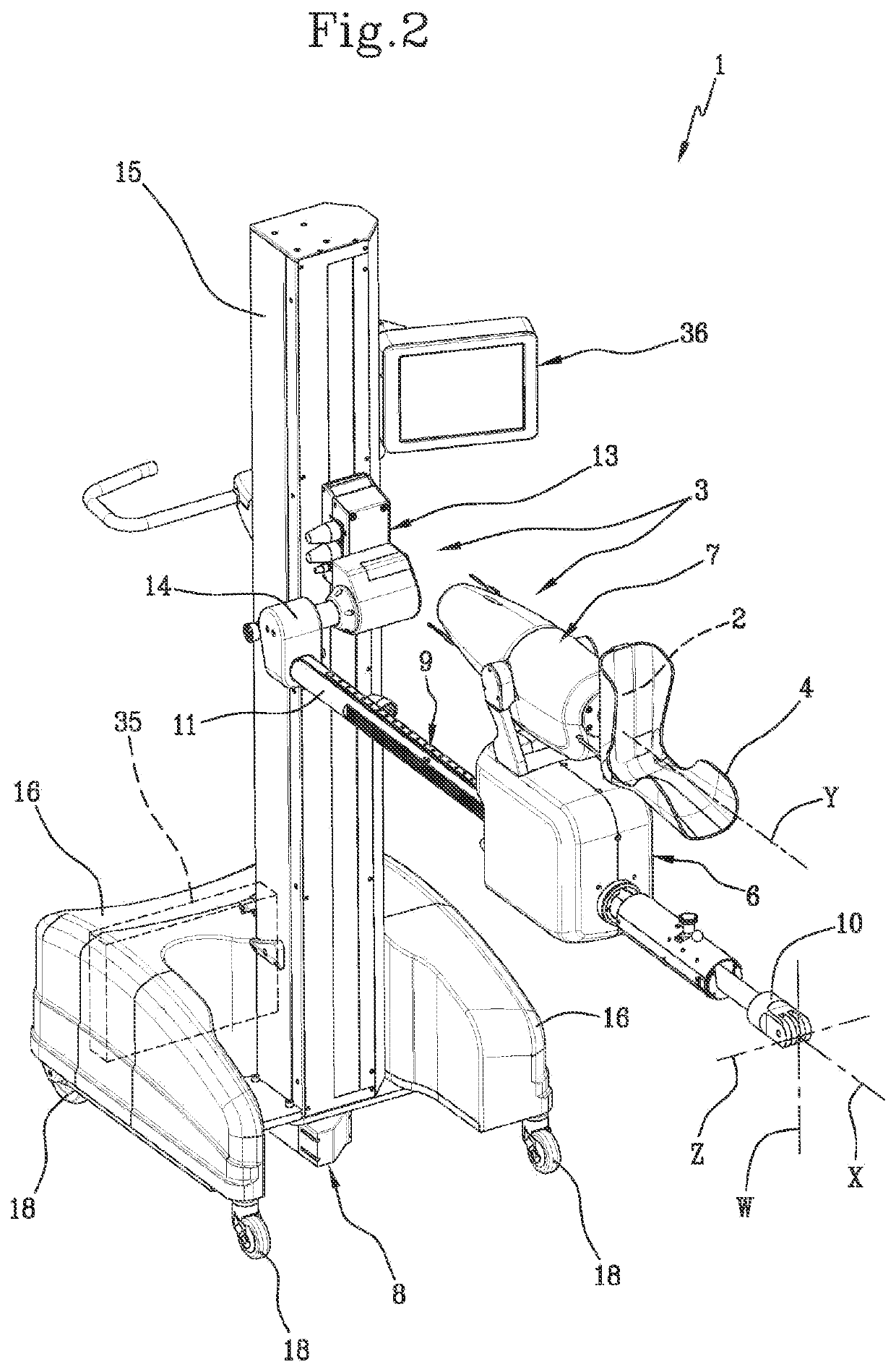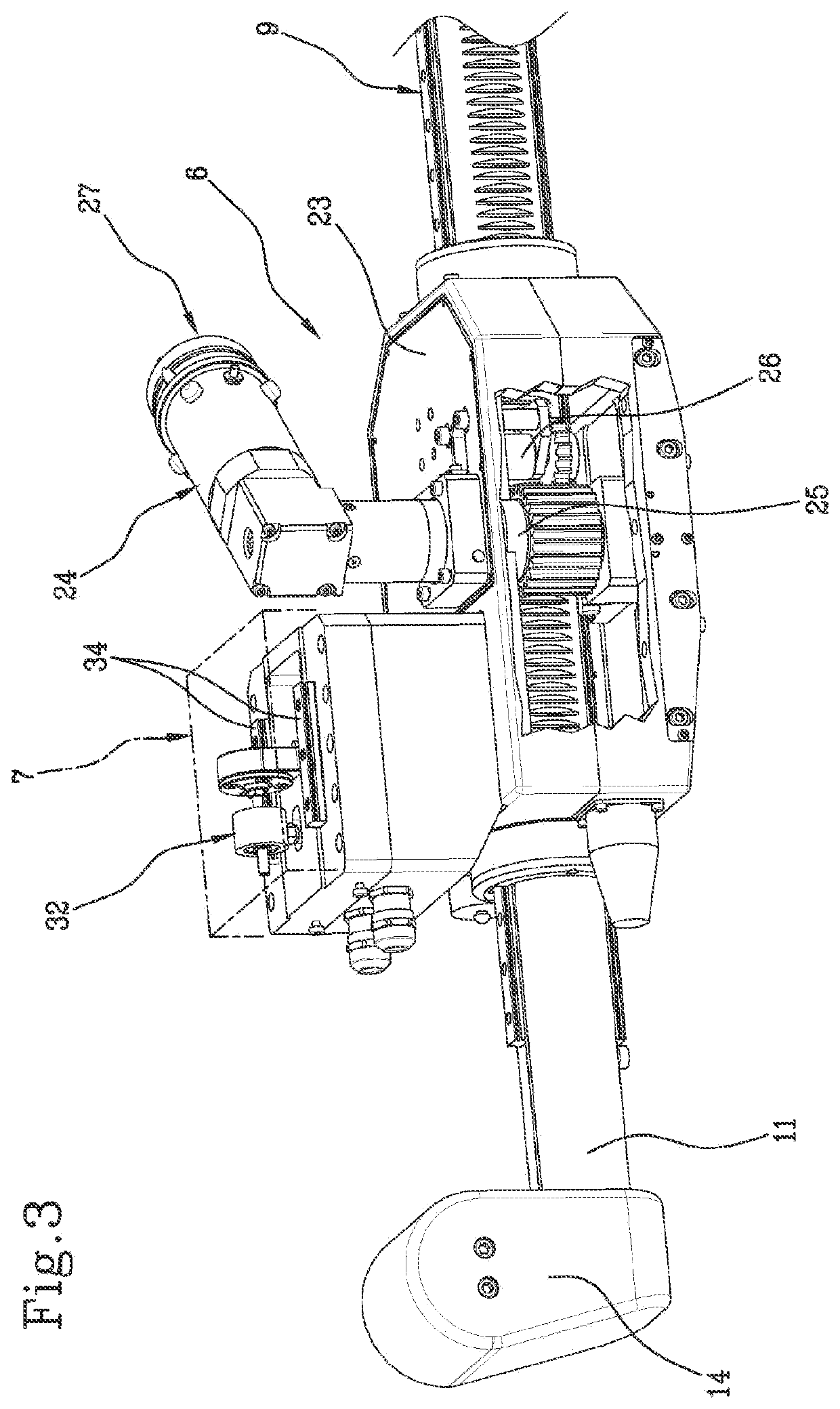Positioning apparatus of a patient's limb
a technology for positioning apparatus and patient's limb, which is applied in the field of orthopaedic surgery, can solve the problems of increasing the amount of traction on the limb, increasing the cost of the operation, and unease for the surgeon, and achieves the effect of reducing the differen
- Summary
- Abstract
- Description
- Claims
- Application Information
AI Technical Summary
Benefits of technology
Problems solved by technology
Method used
Image
Examples
Embodiment Construction
[0078]In the above figures, the number 1 designates in its entirety a patient limb positioning apparatus, according to the present invention.
[0079]In the example shown, the apparatus 1 is suitable for use during performance of surgical procedures with anterior approach for the partial or total replacement of the hip prosthesis of a patient, in order to position, move and / or adequately stress the patient's leg during surgery.
[0080]The apparatus 1 essentially comprises a coupling bracket 2, detachably engageable with the patient's limb, and a movement assembly 3, operating on the coupling bracket 2 to move it according to a plurality of axes of movement X, Y, Z, W.
[0081]The coupling bracket 2 can be combined with a shoe 4 suitable to fit on the foot of the patient, lying in the supine position on an operating table 5.
[0082]In the example shown, axes of movement are identified including the axes X, Y, Z, W:
[0083]a traction axis X, typically horizontal, substantially parallel to the pat...
PUM
 Login to View More
Login to View More Abstract
Description
Claims
Application Information
 Login to View More
Login to View More - R&D
- Intellectual Property
- Life Sciences
- Materials
- Tech Scout
- Unparalleled Data Quality
- Higher Quality Content
- 60% Fewer Hallucinations
Browse by: Latest US Patents, China's latest patents, Technical Efficacy Thesaurus, Application Domain, Technology Topic, Popular Technical Reports.
© 2025 PatSnap. All rights reserved.Legal|Privacy policy|Modern Slavery Act Transparency Statement|Sitemap|About US| Contact US: help@patsnap.com



